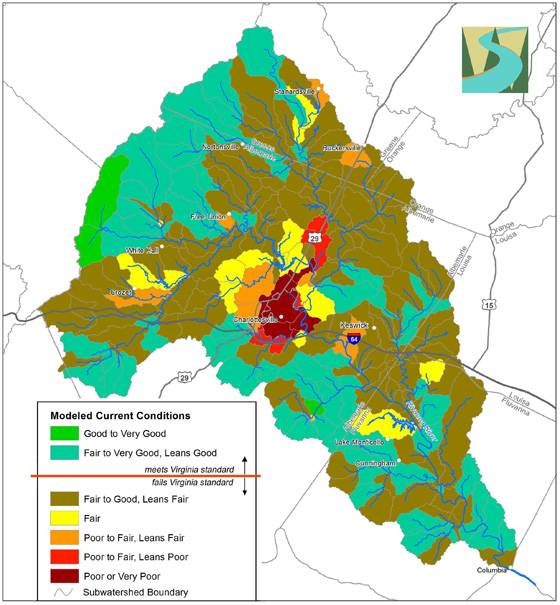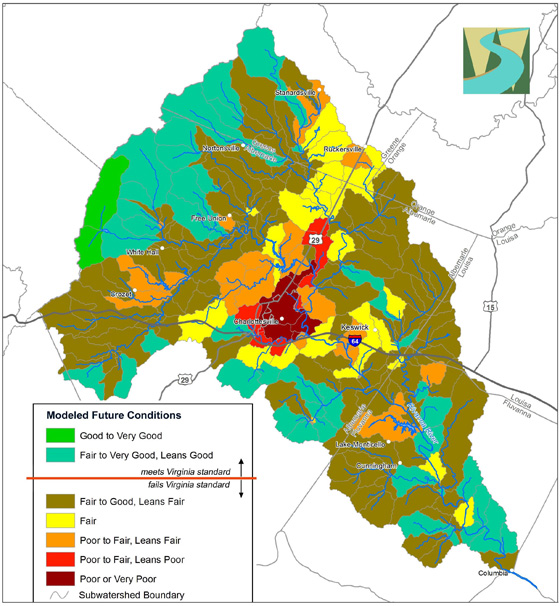The relationship between land use and stream health is so strong that we can estimate stream health based on the amount of forest and development in a stream’s watershed. We can also make informed guesses about future stream health based on land use change scenarios. The maps below illustrate estimations of current and future stream health throughout the Rivanna, based on extrapolations of the land use/stream health relationship revealed by our study.
Likely current health of streams in small Rivanna watersheds

Colors above indicate modeled stream health in small watersheds throughout the Rivanna, based on land use. Per our model, we estimate that 70% of Rivanna streams fail the Virginia biological standard. Fortunately, only 5% to 10% of streams are likely to be severely degraded. Most streams sit near the pass/fail cusp and might meet the standard with better care.
Possible health of Rivanna streams in 20 years

In 20 years, increased development could reduce the number of healthy streams by about a third. We based this projection on a simple, speculative scenario: We increased impervious cover (roads, parking lots, buildings, etc.) and decreased forest cover to levels that could occur in 20 years if population continues growing at the current rate. We distributed growth evenly throughout non-urban areas of the basin. We then calculated stream health based on the projected land use conditions.
